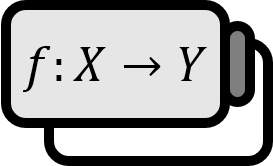The Relationship between the Translation of Trigonometric Functions and Their Derivatives
Formula
- [1] Sine: $$\sin{\left( \theta +\frac { n }{ 2 }\pi \right)}={ \sin }^{ (n) }\theta$$
- [2] Cosine: $$\cos{\left( \theta +\frac { n }{ 2 }\pi \right)}={ \cos }^{ (n) }\theta$$
- $(n)$ means differentiating $n$ times.
Explanation
Simply put, you differentiate once every time you move by 90˚. Let’s actually calculate for $n=3$.
Method Using Addition Theorem
$$ \begin{align*} \cos \left( \theta +{3 \over 2}\pi \right) =& \cos\theta \cos\frac { 3 }{ 2 }\pi -\sin\theta \sin\frac { 3 }{ 2 }\pi \\ =& \cos\theta \cdot 0-\sin\theta \cdot (-1) \\ =& \sin\theta \end{align*} $$
Method Using Formula
$$ \begin{align*} { \cos }^{ (3) }\theta =& (\cos\theta )\prime \prime \prime \\ =& (-\sin\theta )\prime \prime \\ =& (-\cos\theta )\prime \\ =& \sin\theta \end{align*} $$
Naturally, it’s more convenient to differentiate three times than to use the addition theorem. In fact, cases where a problem requires horizontal translation by $90˚$ are not given so frequently, so it’s not often used. However, because it is a very simple formula, it is more beneficial to be familiar with it rather than just memorizing it.
